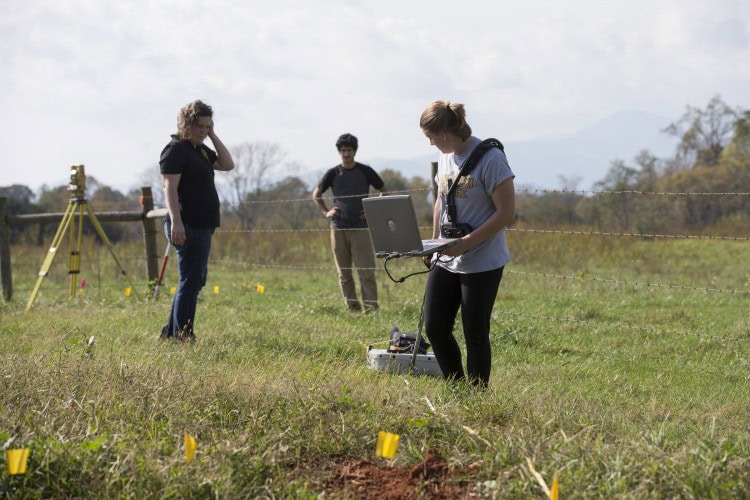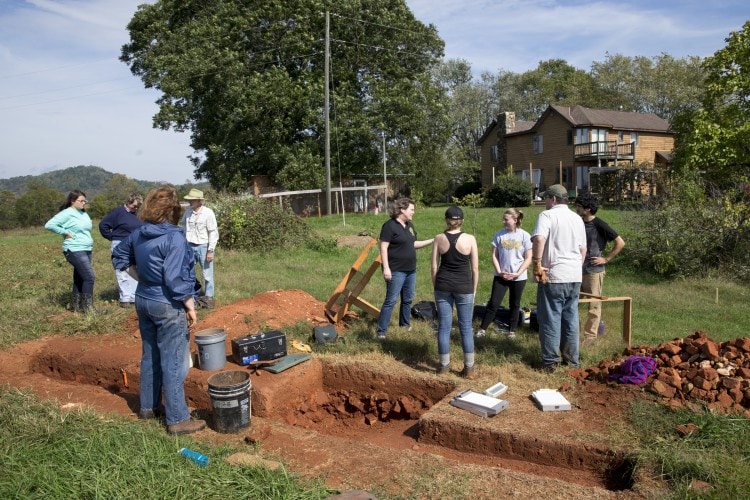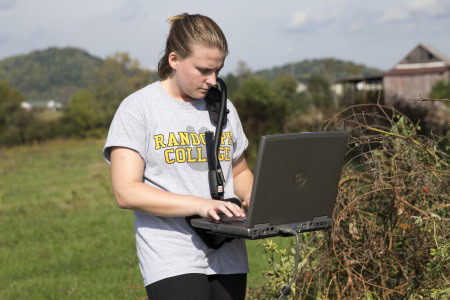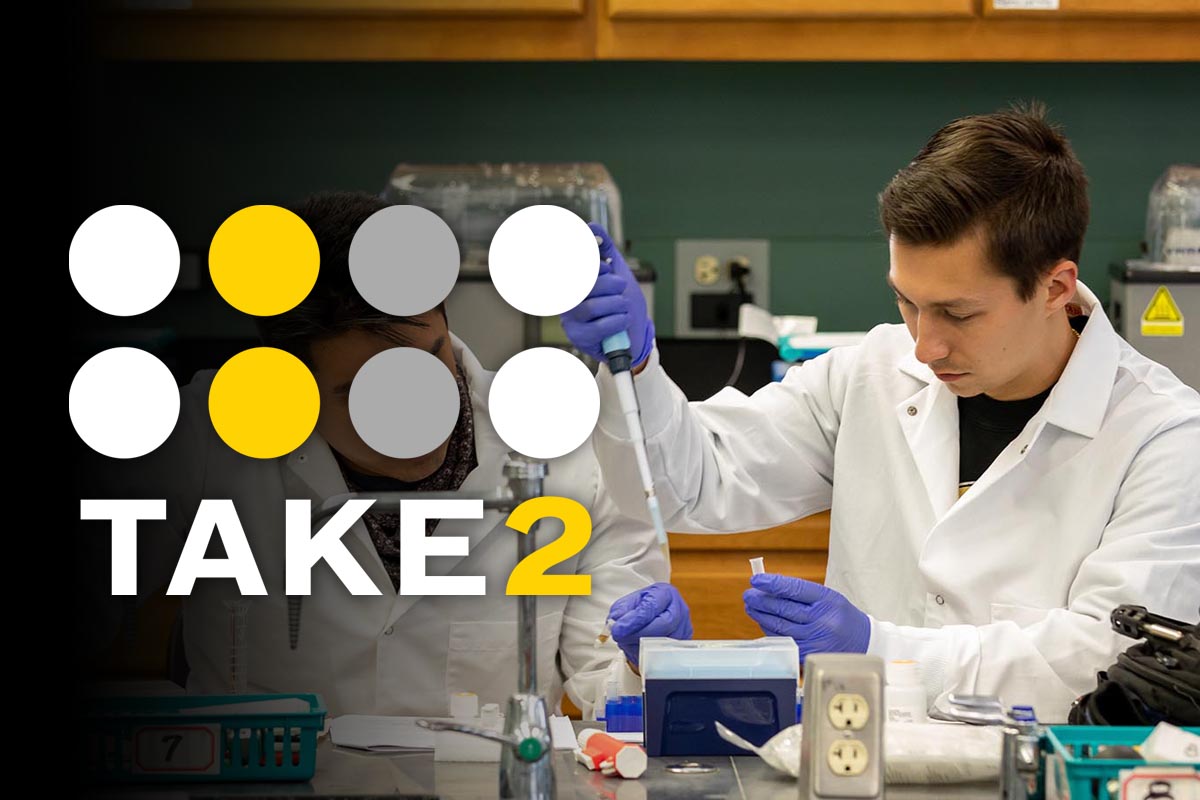Randolph students roll over history in Nelson County

Sara Woodward ’16 pulls the GPR device across the site while Sarah Sojka and Hagay Haut ’16 observe.
Hagay Haut ’16 spent a recent afternoon lugging what looked like a suitcase across a garden in Nelson County. Occasionally stepping on turnips and ducking through the wires of a surrounding fence, he used the Ground Penetrating Radar (GPR) to search for clues that there was more than just vegetables buried beneath the soil.
Haut and Sara Woodward ’16 joined Sarah Sojka, a Randolph physics and environmental studies professor, to assist in the Cabellsville Archaeological Project. The archaeological dig started two years ago after Lawrence and Cora Wood Clements discovered bricks from an 18th Century jailhouse buried in their back yard.
Since then, Hurt & Proffitt, Inc. land surveyors and community volunteers have worked at the property, unearthing more of the jail’s brick and mortar foundation. Next, they are hoping to find traces of the courthouse and other buildings that once stood in what used to be the community of Cabellsville–the Amherst County seat in the 1760s.
The Randolph students used the GPR to compare the soil density and depth levels on a synchronized laptop software program. “We had used it before to survey a slab of land for our Summer Research project on tiny houses,” Haut said. “So when Professor Sojka asked us a few weeks ago if we’d like to help out with this project, of course we said yes because we knew it would be fun.”
According to Sojka, a quick look at the data collected during the recent outing to the site indicated the possibility of another location of underground structures. “Something that’s really cool about this kind of research is that you can cover a fairly large area of space in a short amount of time, at least compared to having to dig all of it up,” Sojka said. “Not a lot of small liberal arts colleges are going to have their own Ground Penetrating Radar, so it’s a neat technique that we can get our students exposure to that they wouldn’t necessarily get at a lot of other schools.”
The experience helped show Randolph’s students the importance of patience in this type of work, Sojka said. She marveled at the many shards of glass and rusted nails that had already been recovered at the site, and at the time and careful digging that it must have taken to retrieve them.
“Until I started this project, I didn’t fully appreciate how meticulous archaeologists are when they dig and just how much time it takes to explore every square meter of area,” Sojka said. “It is a really massive time investment, so if we can cut down on how much area they need to excavate that can make a huge difference in what they can get done with limited time.”
Sojka is hoping to continue to involve Randolph students in the project.
“I love the idea of projects like this that cross disciplines,” she said. “I think this has Summer Research and other project potential, and it’s really fascinating. It’s exciting to me to be getting involved with more projects outside of Randolph and in the community.”

Professor Sarah Sojka, Sara Woodward ’16, and Hagay Haut ’16 speak with other volunteers in the archaeology project at the site of the uncovered jailhouse.


